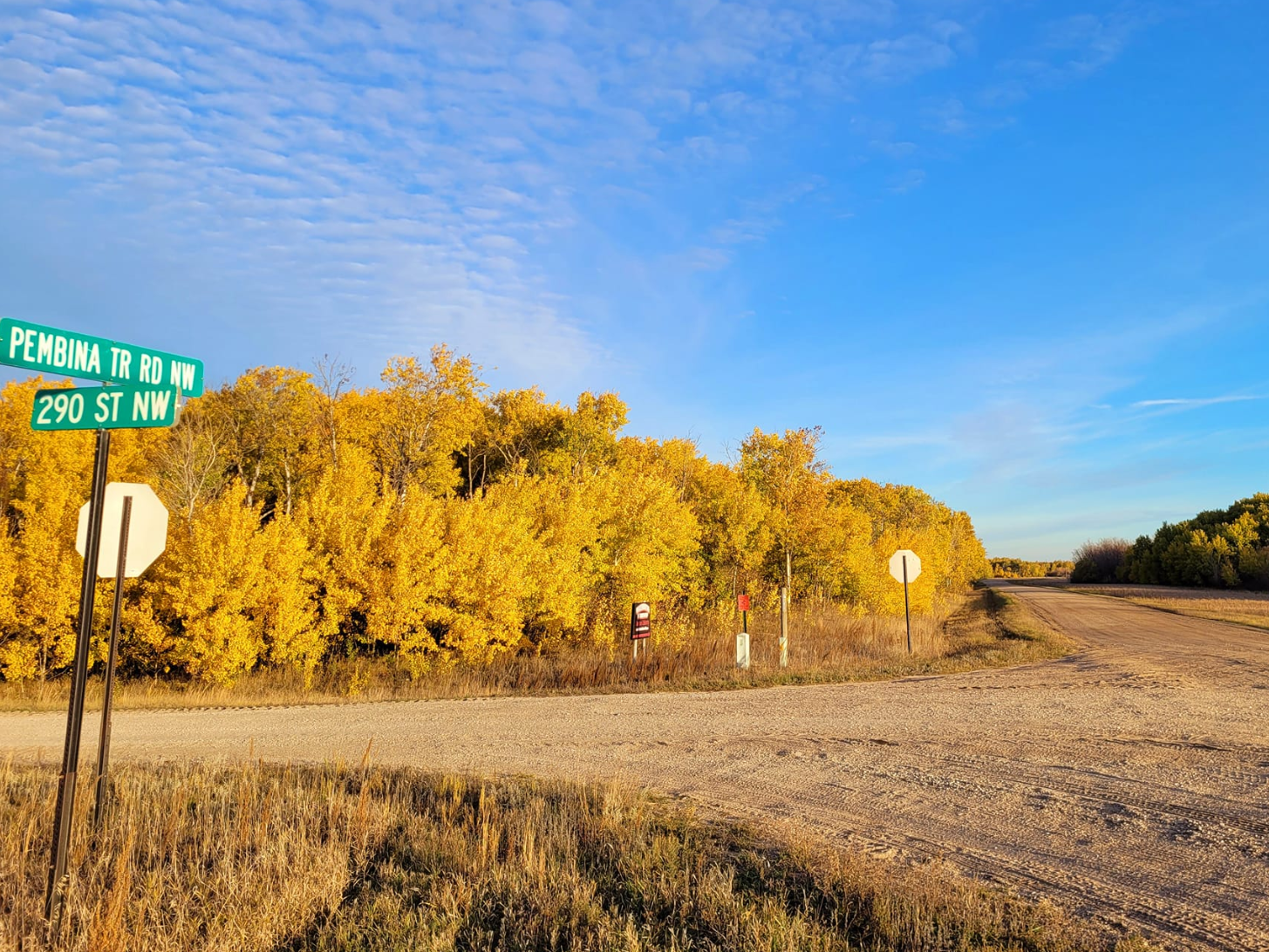
The Historic Pembina Trail
The Historic Pembina Trail
We are very proud to be located where we were founded. With as much as we have expanded our operations, you can still find us along the Historic Pembina Trail. The Pembina Trail was the original trade route established during the fur trade that connected Fort St. Anthony in MN (which later became Fort Snelling and then St. Paul) to the Red River Colonies (the areas in and around what would later become Winnipeg, MB). The Assiniboine River Fur Trade was essentially a series of Forts and Posts along the southern and western sides of modern-day Lake Winnipeg. A few ox cart routes connected these posts to Fort St. Anthony. The route that became the most popular and widely used route for all Fur traders for numerous reasons was the Pembina Trail (often called the woods trail).
In terms easier to follow, in the early to mid 1800s, Fur bearing animals were trapped and hunted by Frontiersman and Native Americans in developing areas (MN, Dakotas, Canada, etc.). those furs were extremely valuable and needed shipping and trading hubs. Those trading hubs were referred to as forts and in connection with the wagon trails that connected these forts, they would eventually become the cities and roads that we live in and travel on today. The Pembina Trail became the most popular wagon trail in the Mid-West during the 1800s due to its elevation and soil type which provided dry travels and patches of small woods which provides cover from the elements as well as shelter and places to hide during reoccurring tribal wars that consisted during this era over territory claims between tribes. We are very proud of the history of this area, and we look to continue to build on its legacy.
The northern half of the Pembina Trail is mostly a sand/gravel ridge that is remnants of what was once a beach from Lake Agassiz. Lake Agassiz was at its peak size around 11,000 BC. At that time, Lake Agassiz was around 170,000 sq. miles which would make it the largest lake in the modern world today. The vast glacier melt offs from the receding ice age are to credit for Lake Agassiz. While Lake Agassiz is no longer in existence today, many of the modern lakes in our region are remnants of what this giant lake once was. The mighty Red River that connects Lake Winnipeg and Lake Traverse would be the longest stretch of still intact body of water that is a modern-day remnant of historic Lake Agassiz. Lake of the Woods, Red Lake and many other of this region’s lakes can attribute its existence to Lake Agassiz.
The long since abandoned beach remnants of Lake Agassiz ended up making a great travel route for travelers from the Red River Colonies to Southern Minnesota as it provided consistent dry ground, lack of mud, minimal bugs and in general much easier travel than through swampier/wet ground.
While the days of the Fur Trade have come and gone, the beauty of the Pembina Trail will be here for generations. The long since abandoned beach remnants of Lake Agassiz still give an incredible vantage point to look out and see some of the most beautiful nature that can be found anywhere. A huge variety of wildlife is prevalent along the trail including Bear, White Tailed Deer, Moose, Timber Wolves, Bobcat, Fisher, Badger, Fox, Coyote, and even Elk. You will also see a wide variety of Wildflowers and for a good part of our summer you will get to see the coveted Minnesota Lady Slipper. It is also a great place for a late drive as the stars at night seem endless.
We are extremely proud of where we are from and proud to have grown our operation from this remote location, we love the communities that we are a part of and the communities that we serve. We are honored that we have expanded into much larger areas, but our home will always be along the Pembina Trail.
Oxcarts and the Historic Trail
Ox Cart (train) along trail transporting hides, trade goods and other items needed to settle the territory we call home
Travelers arriving in St. Paul from the Red River Colony’s
Native Americans and Frontiersman along the trail
Metis people of Canada were often hired on as guides for travelers. Metis are people of both Native and Caucasian descent. Because of this, they were seen as a great liaison between the tribes and travelers.
Travel routes from the Red River Colony’s to St. Paul
Map of Lake Agassiz 11,000 B.C. +/-
A map of Lake Agassiz around 13,000 years ago
Wildlife Along the Historic Trail
Newborn White-Tailed Deer fawn that spent an A.M. outside of our offices.
Newborn White-Tailed Deer fawn on our campus
Moose a few hundred yards from Waterworths Woodshop along the Pembina Trail
Adult Moose hiding in plain sight
Scenic Views of the Trail
Typical Autumn foliage along the trail. The rustic road gets many more visitors and spectators from August - November
Typical Autumn Day along the Pembina Trail














